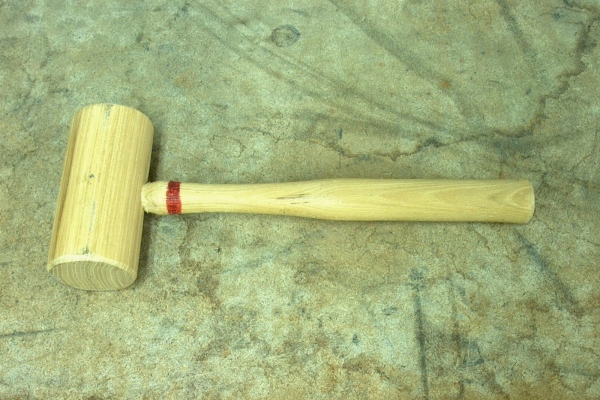
Throw this mallet across the room. Ask the students to watch the motion of the center of mass (the red line; now a fluorescent orange line), which follows a simple, parabolic path.
The center of mass of an object is the weighted mean displacement of all of its mass points from some reference point, usually the origin of the coordinate system in which the object sits. This is the sum of the products of all the mass points with their distances from the origin, divided by the total mass of the object (rcm = Σmiri/M). If we set the center of mass of the object at the origin, we find that this sum equals zero. This tells us that if we exert a force on the object at its center of mass, this results in no torque on the object, but if we apply a force to the object at any other point, we exert a torque on the object about its center of mass. The center of mass also has the interesting property that, when a force is applied to the object, its center of mass moves as would a point mass, equal to the total mass of the object, subject to the same force. That is, no matter what the overall motion of the object is, its center of mass follows a simple path. For example, if the object is tossed up in the air from one place to another, no matter how the object rotates or twists, the center of mass follows a simple parabolic path.
The mallet in this demonstration provides a good illustration of this. When you hold the mallet by the handle and then toss it up in the air, you simultaneously exert a force on the mallet that sends it along the path of a projectile – the path that, for example, a ball would take if you tossed it in the air – and exert a torque on the mallet about its center of mass. Thus, when you toss the mallet up in the air, you send it up in a parabolic path, and set it tumbling at the same time. The line marked on the handle near the head of the mallet, where its center of mass lies, follows a simple parabolic path while the mallet tumbles about it.
References:
1) Resnick, Robert and Halliday, David. Physics, Part One, Third Edition (New York: John Wiley and Sons, 1977), pp. 162-168.